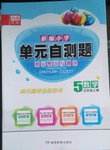题目内容
【题目】据报道,北京市属行政事业单位将整体或部分从市中心迁入北京市东南距市中心30公里的通州,届时通州将成为北京政务新区,一些即将迁入的人员对此举表示担忧。根据报道内容,结合所学知识完成下列问题。
【1】北京市属行政事业单位搬迁的首要目的是( )
A.减轻中心城区的人口压力
B.缓解北京东郊的交通拥堵
C.缩小城市内部经济水平差异
D.促进城东生态环境的改善
【2】为了解决迁入人员的后顾之忧,可在通州区( )
①优化交通网络,改善与中心城区交通联系
②大力引进工业,产城融合,增加就业岗位
③配置优于中心城区的公共设施和绿地系统
④提高教育、医疗、餐饮、文化等服务水平
A.①②③ B.①③④ C.①②④ D.②③④
【答案】
【1】A
【2】B
【解析】
试题分析:
【1】北京市属行政事业单位迁入通州,会加剧北京东郊的交通压力,故排除选项B;由于搬迁的对象主要是行政事业单位,不可能缩小城市内部经济水平差异,故排除选项C;行政事业单位搬迁可能会加大城东生态环境的压力,故排除选项D;北京市属行政事业单位搬迁可以分散中心城区的人口,有助于减轻中心城区的人口压力,故选项A正确。
【2】由于搬迁的对象是行政事业单位,就业问题不是迁入人员担忧的主要问题,故排除②;为了解决迁入人员的后顾之忧,可在通州区优化交通网络,改善与中心城区交通联系、配置优于中心城区的公共设施和绿地系统、提高教育、医疗、餐饮、文化等服务水平,故选项B正确。

 新编小学单元自测题系列答案
新编小学单元自测题系列答案【题目】读“我国老年人口分户籍迁移和青壮年人口迁移情况统计表”。完成下列问题
老年人口主要迁入地 | 占老年总迁移人比重 | 农村户籍老人迁入地 | 占农村老年迁移人比重 | 城市户籍老人迁入地 | 占城市老年迁移人比重 | 青壮年迁移人口主要迁入地 | 占青壮年总迁移人比重 |
广东 | 21.41 | 广东 | 19.93 | 广东 | 22.74 | 广东 | 39.63 |
天津 | 10.61 | 天津 | 15.54 | 上海 | 9.35 | 上海 | 12.69 |
上海 | 8.14 | 上海 | 6.79 | 北京 | 6.09 | 北京 | 5.76 |
北京 | 4.74 | 内蒙古 | 5.08 | 天津 | 6.19 | ||
山东 | 3.95 | 黑龙江 | 5.01 | 山东 | 5.08 | ||
合计 | 48.85 | 合计 | 52.34 | 合计 | 49.46 | 合计 | 58.06 |
【1】表中数据,反映的现象是
A.老年人口主要迁往生活成本低的地区
B.城市户籍老人主要迁往农村和小城镇
C.农村户籍老人均迁往经济发达的东部地区
D.老年人口迁入地与青壮年人口的迁入地基本一致
【2】关于老年人口迁移因素的分析正确的是
A.自然环境是主要因素
B.家庭因素是主要因素
C.务工经商是主要因素
D.全面二孩政策的实施对老年人口迁移无影响